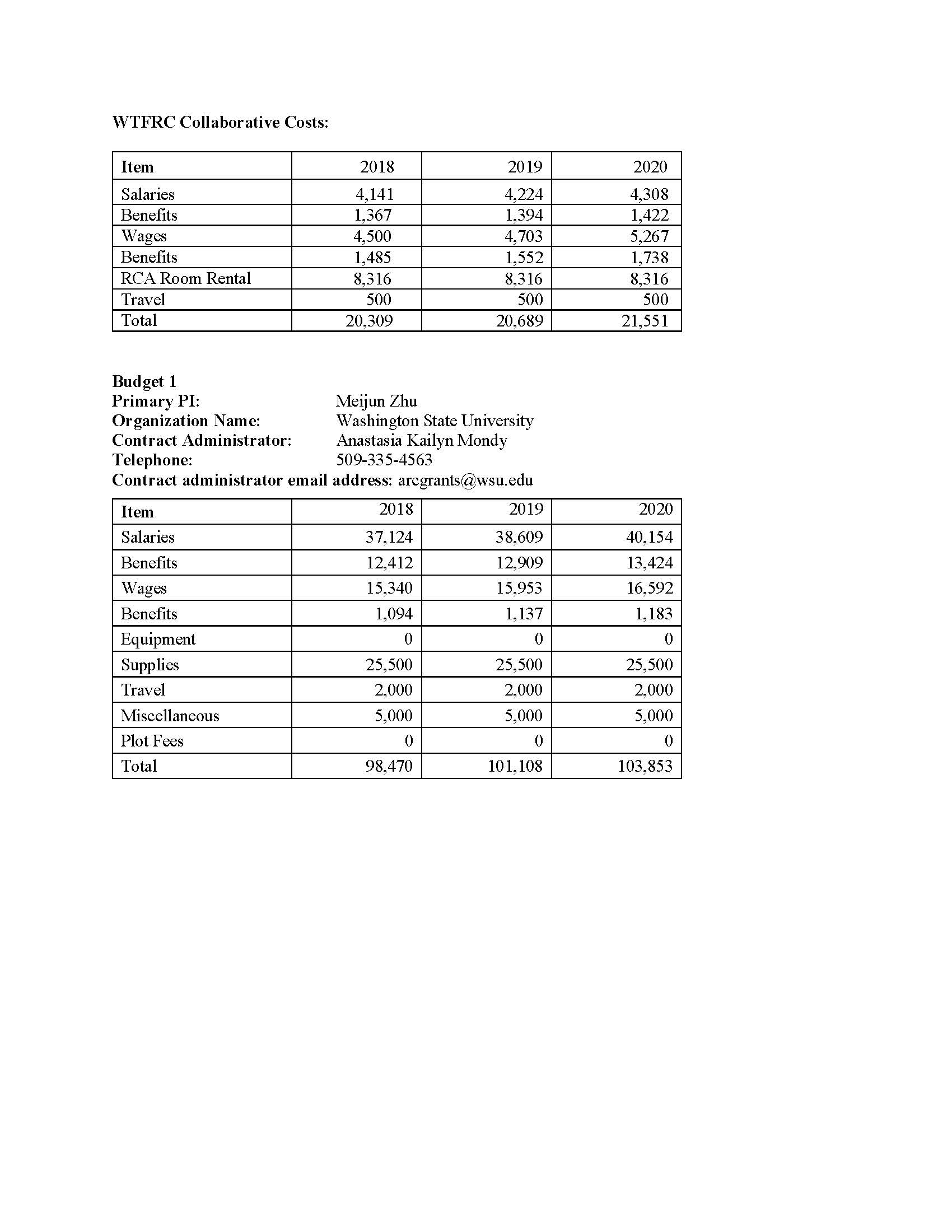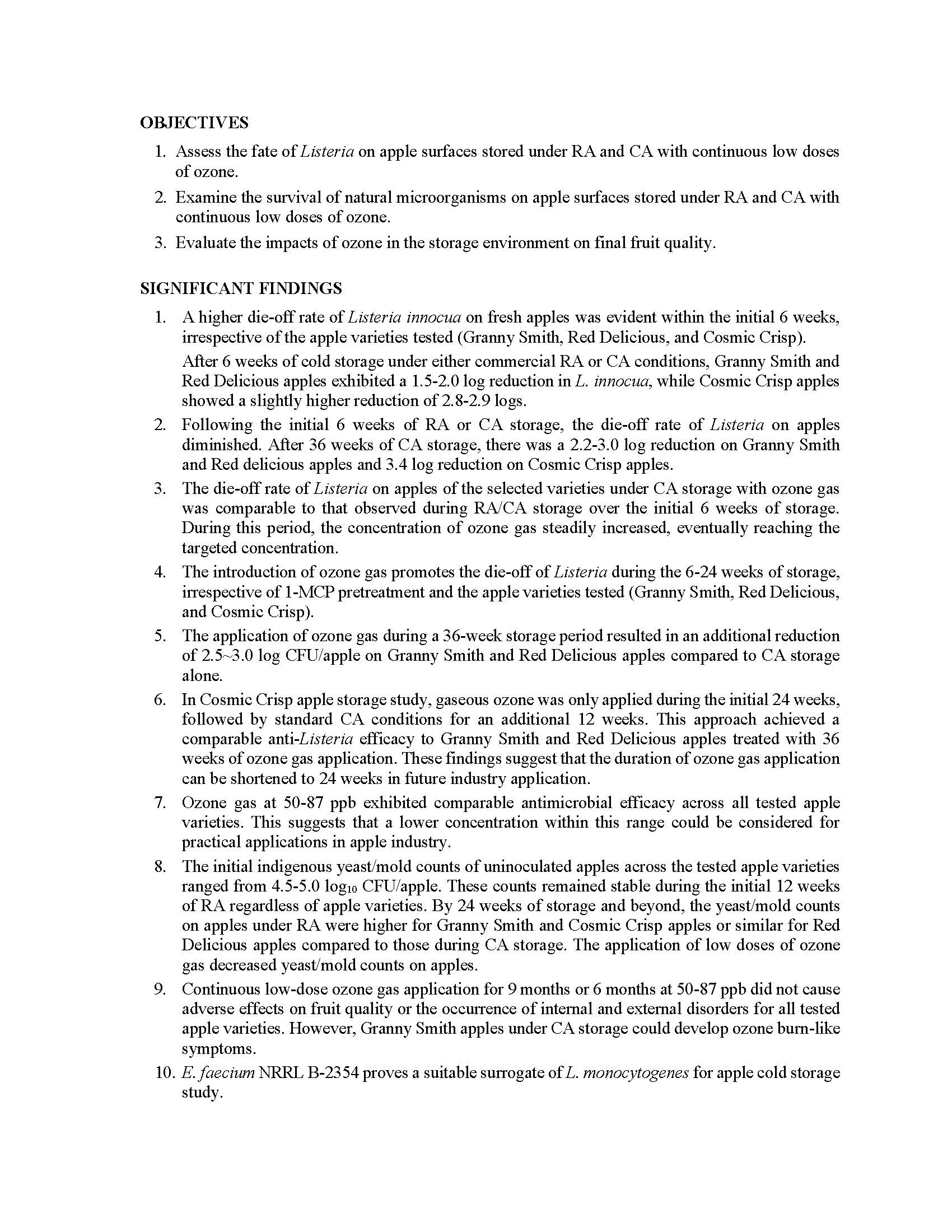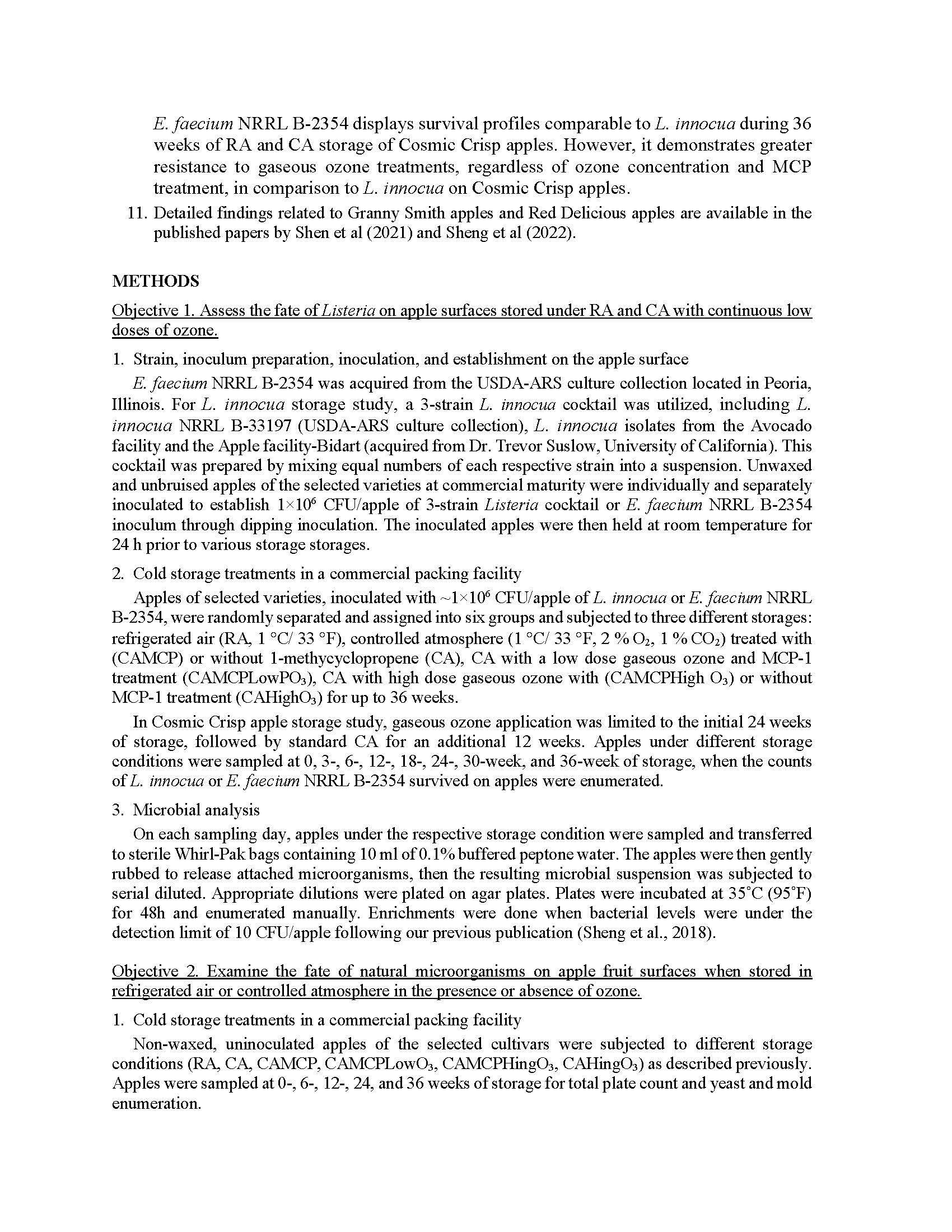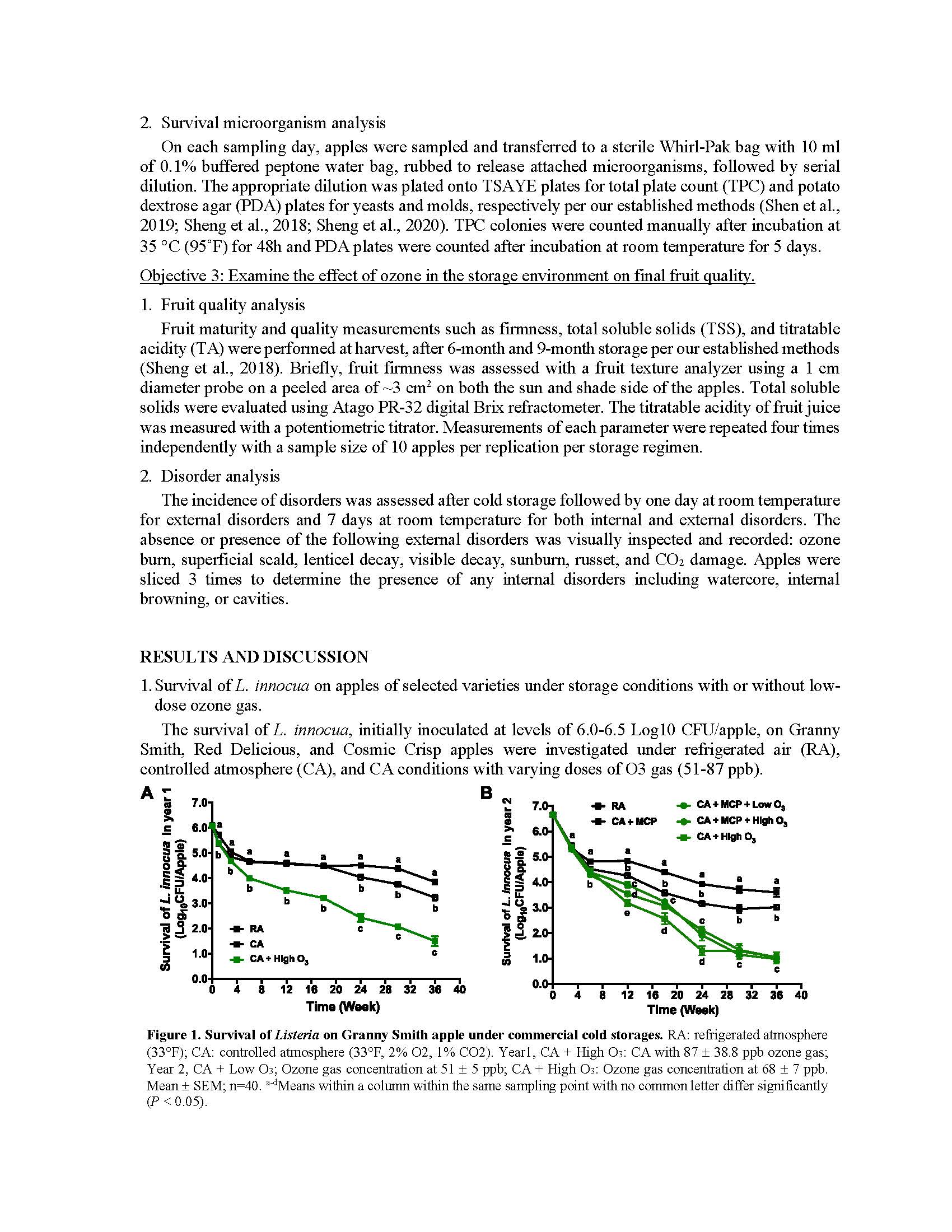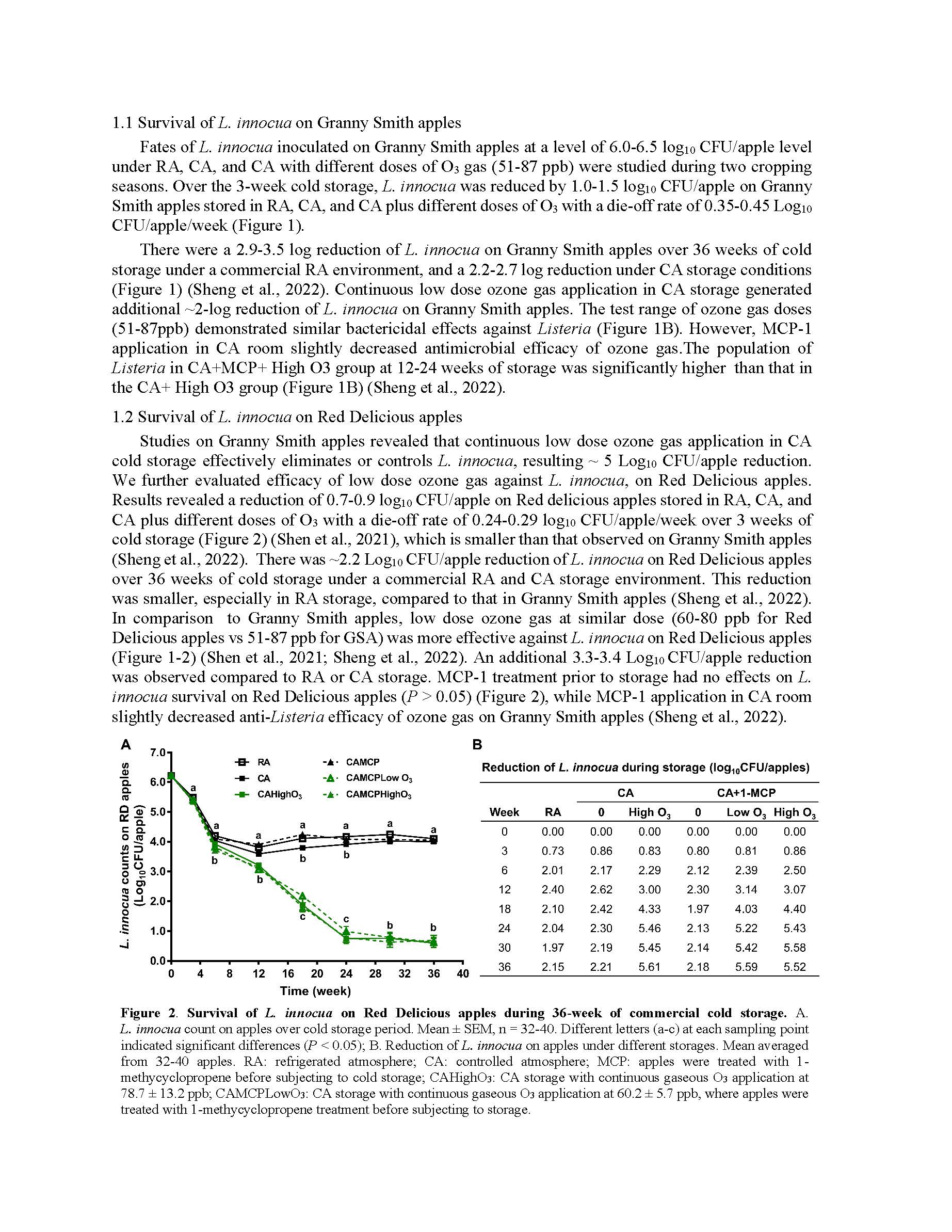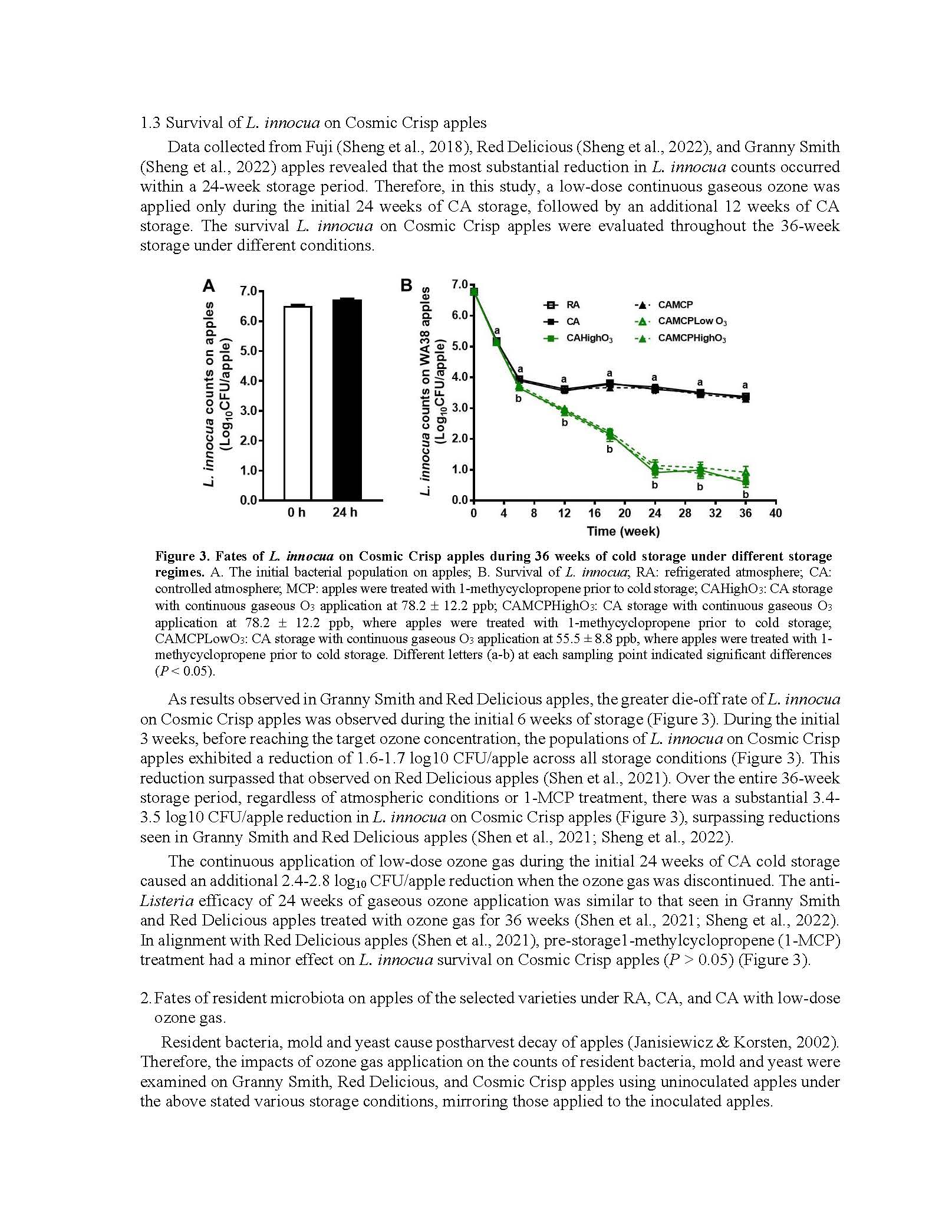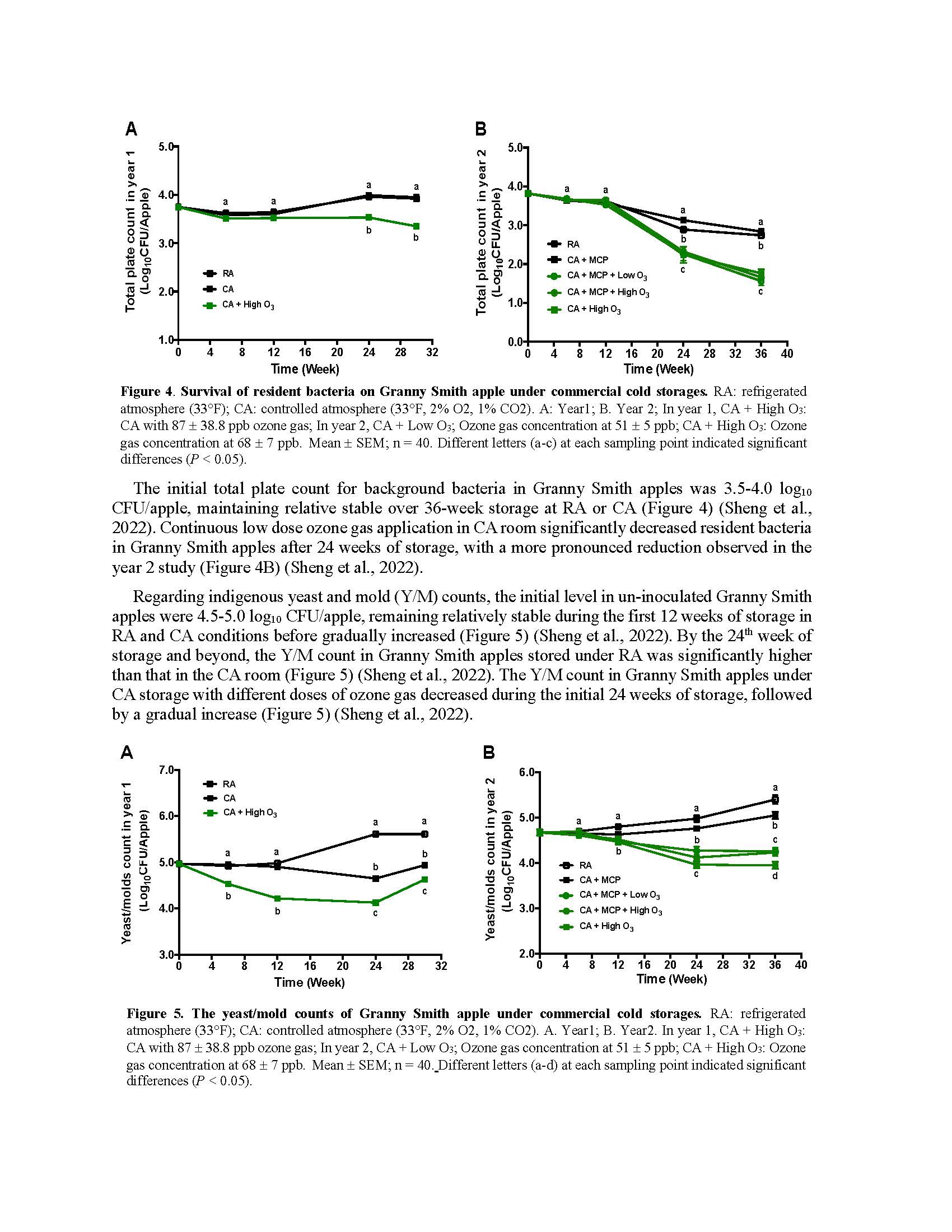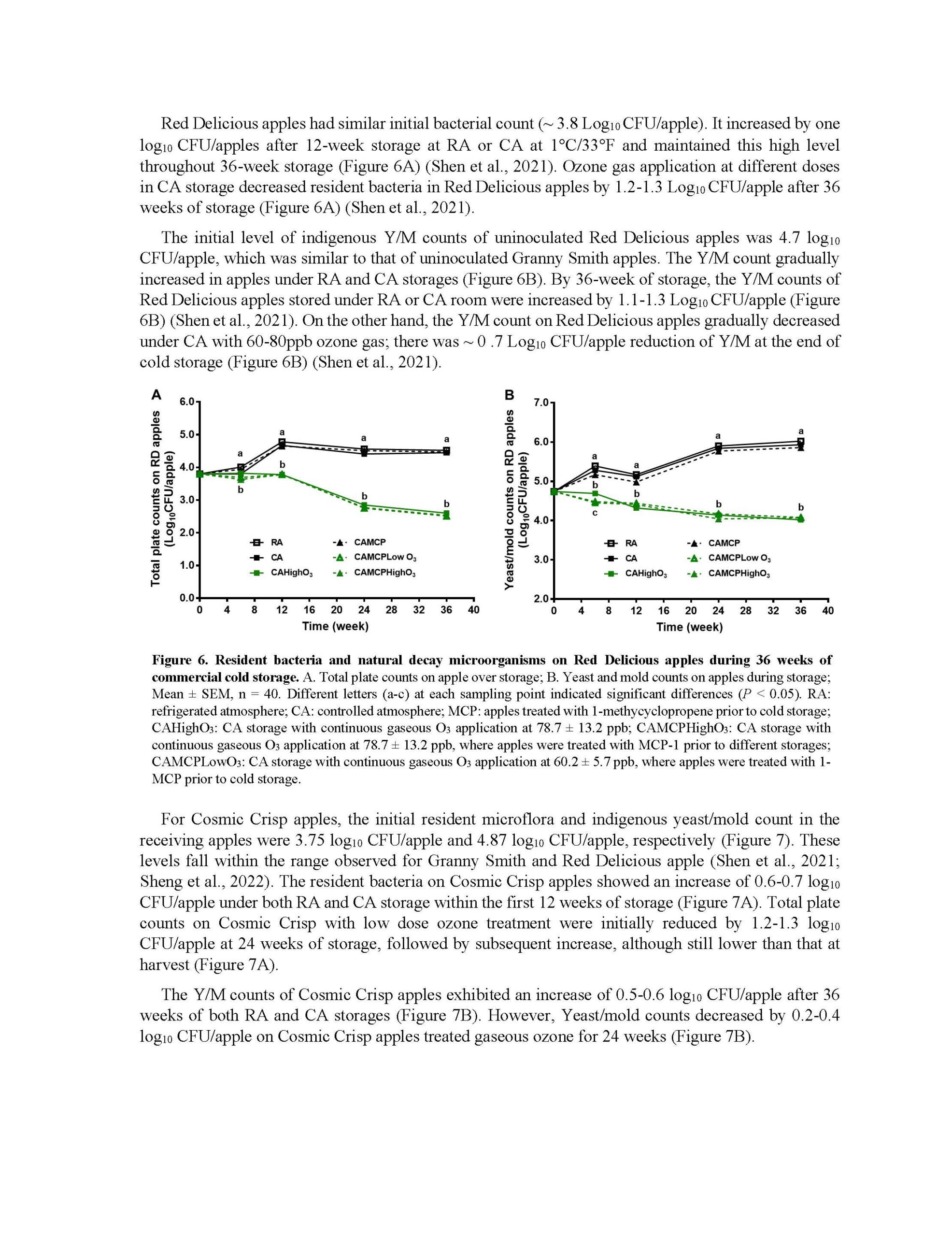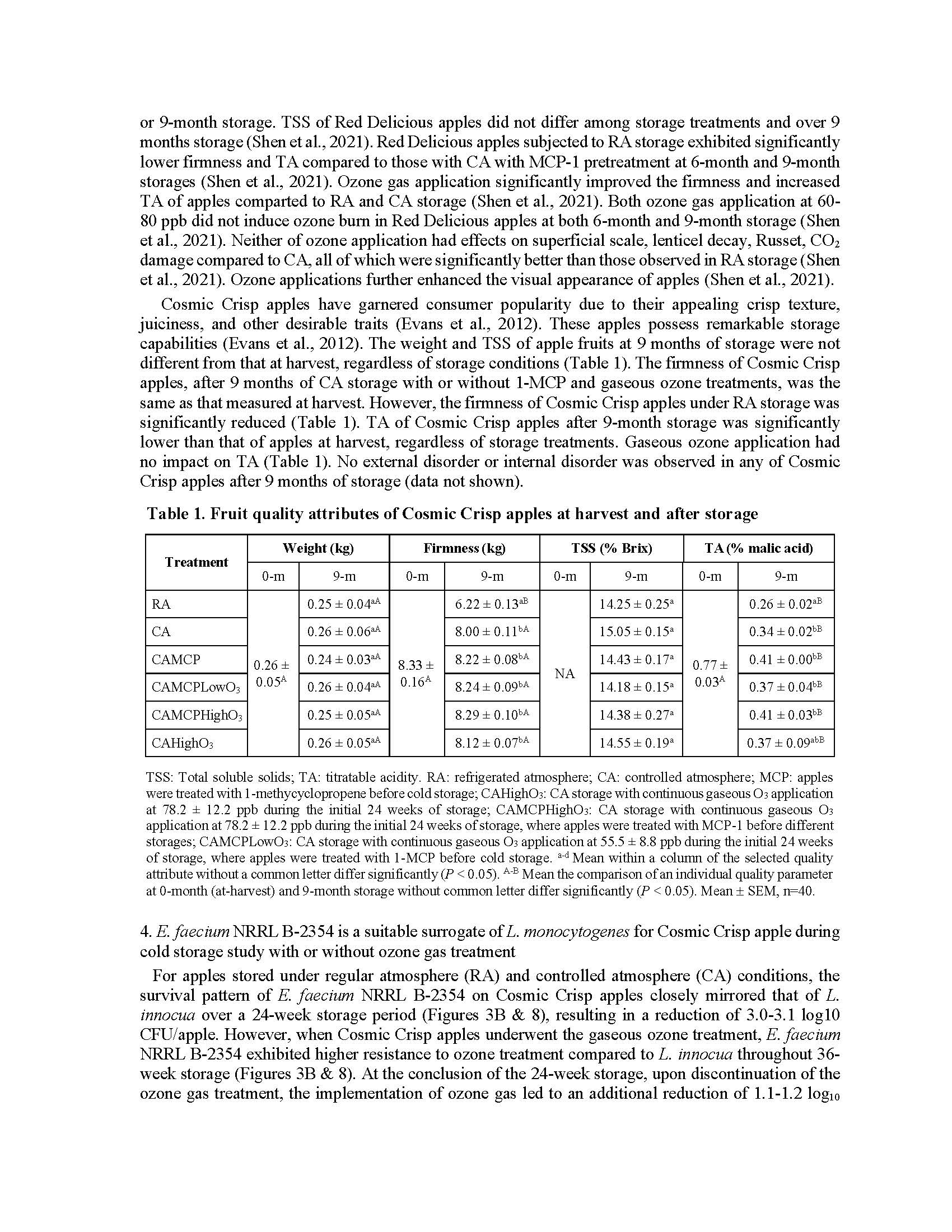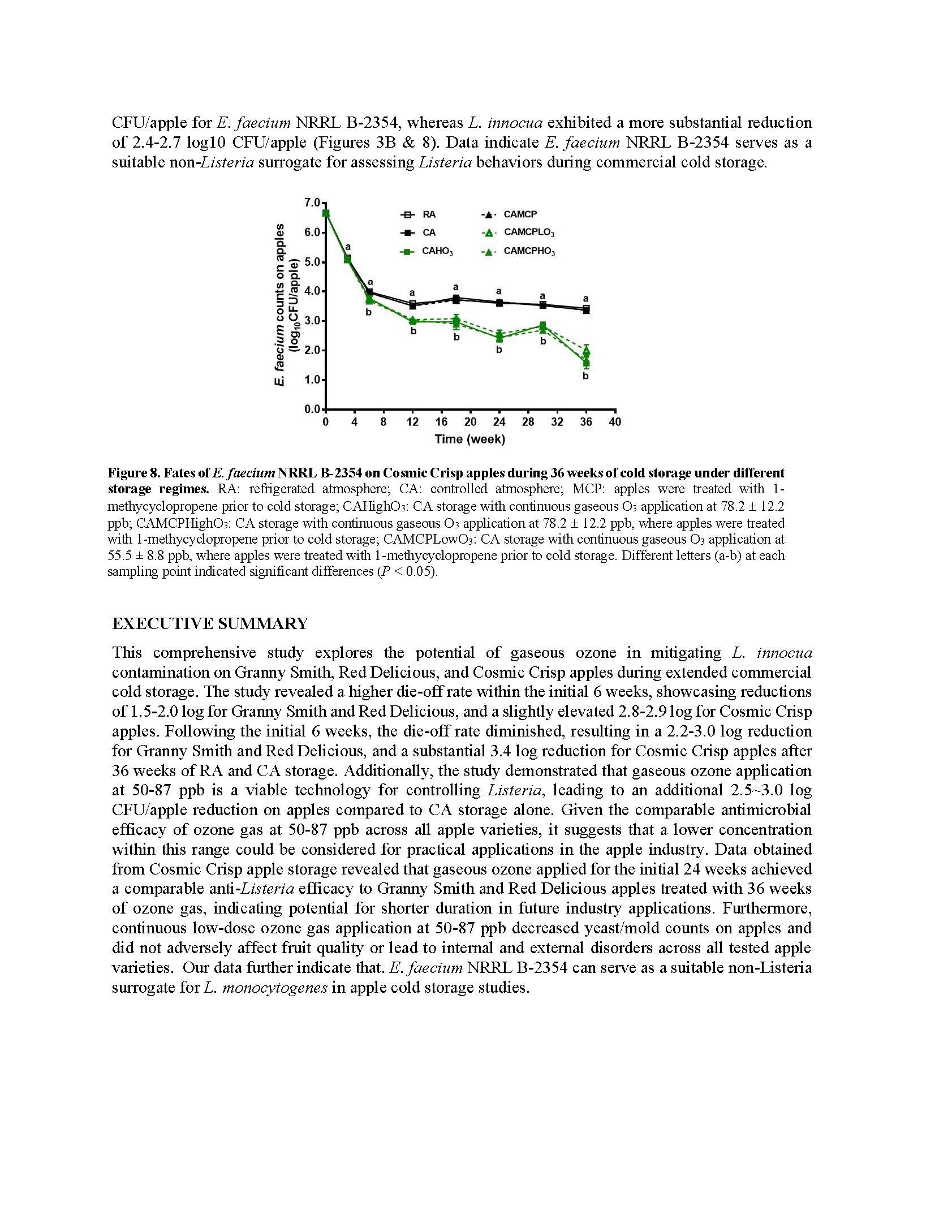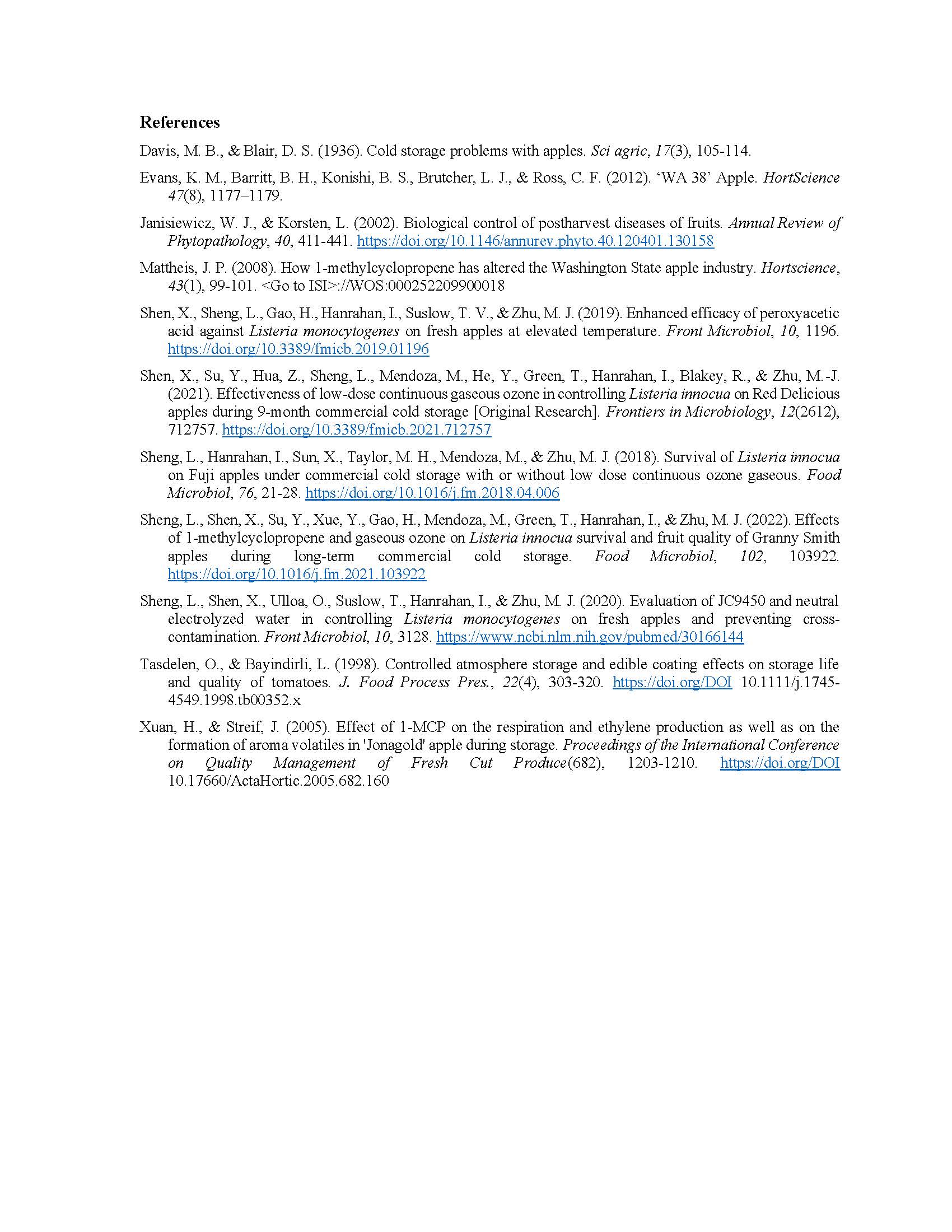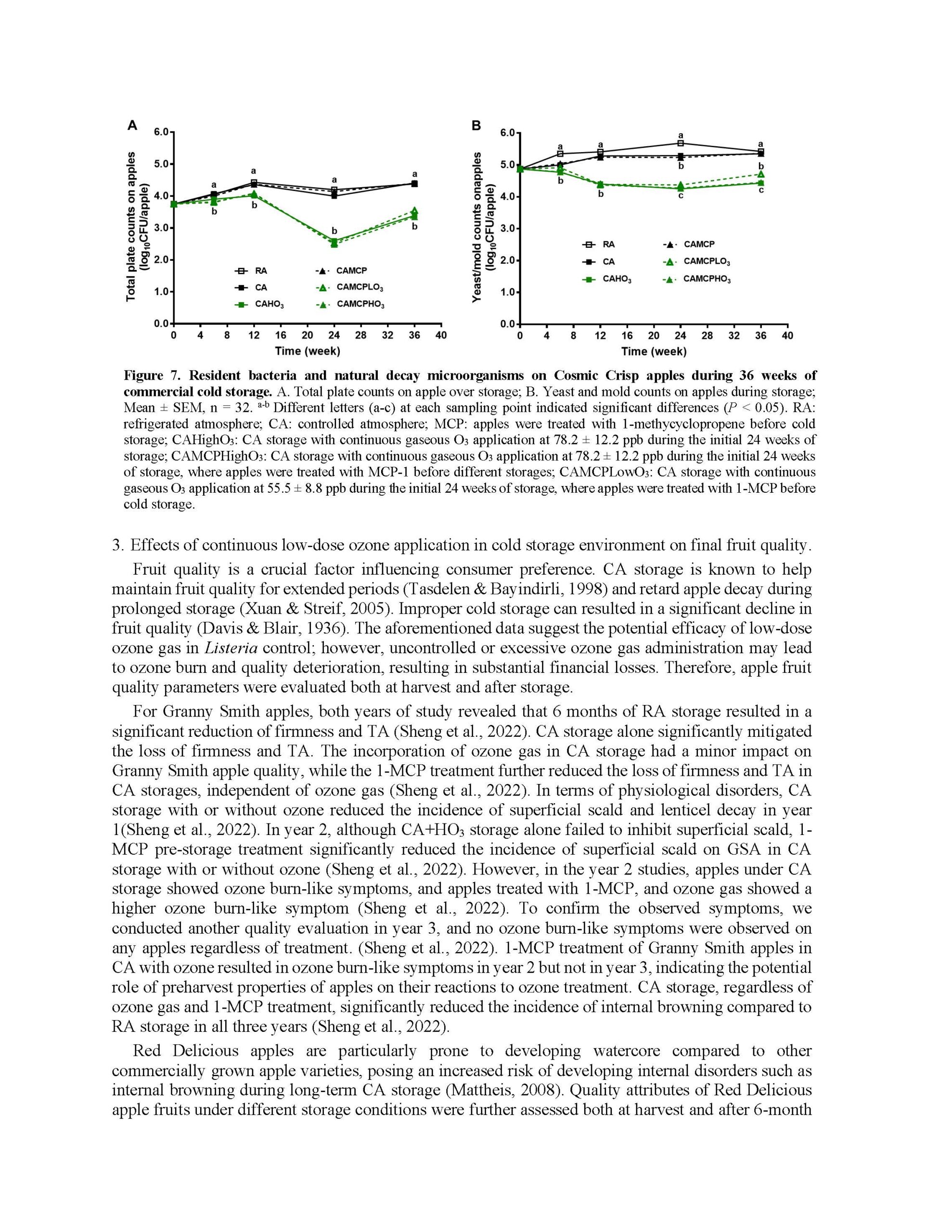Fate of Listeria on apples at ozone and controlled atmosphere storage
Author: Meijun Zhu
Published: 2024
Summary: This comprehensive study explores the potential of gaseous ozone in mitigating L. innocua contamination on Granny Smith, Red Delicious, and Cosmic Crisp apples during extended commercial cold storage. The study revealed a higher die-off rate within the initial 6 weeks, showcasing reductions of 1.5-2.0 log for Granny Smith and Red Delicious, and a slightly elevated 2.8-2.9 log for Cosmic Crisp apples. Following the initial 6 weeks, the die-off rate diminished, resulting in a 2.2-3.0 log reduction for Granny Smith and Red Delicious, and a substantial 3.4 log reduction for Cosmic Crisp apples after 36 weeks of RA and CA storage. Additionally, the study demonstrated that gaseous ozone application at 50-87 ppb is a viable technology for controlling Listeria, leading to an additional 2.5~3.0 log CFU/apple reduction on apples compared to CA storage alone. Given the comparable antimicrobial efficacy of ozone gas at 50-87 ppb across all apple varieties, it suggests that a lower concentration within this range could be considered for practical applications in the apple industry. Data obtained from Cosmic Crisp apple storage revealed that gaseous ozone applied for the initial 24 weeks achieved a comparable anti-Listeria efficacy to Granny Smith and Red Delicious apples treated with 36 weeks of ozone gas, indicating potential for shorter duration in future industry applications. Furthermore, continuous low-dose ozone gas application at 50-87 ppb decreased yeast/mold counts on apples and did not adversely affect fruit quality or lead to internal and external disorders across all tested apple varieties. Our data further indicate that. E. faecium NRRL B-2354 can serve as a suitable non-Listeria surrogate for L. monocytogenes in apple cold storage studies. Key words: Listeria, Controlled atmosphere storage, low doses ozone.
Keywords:


